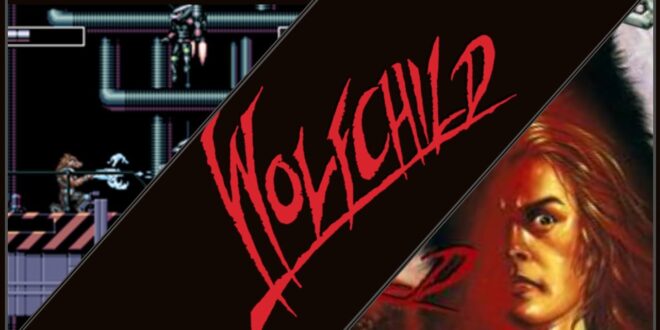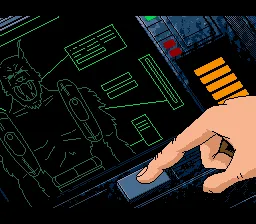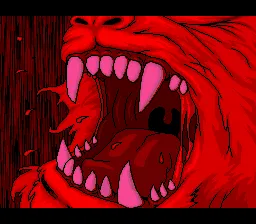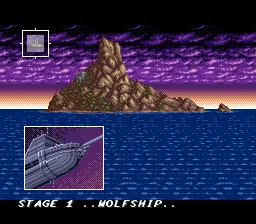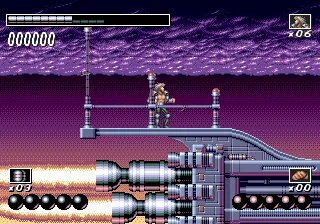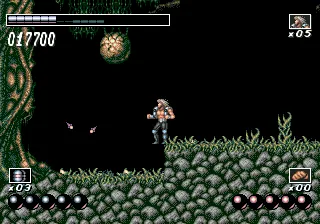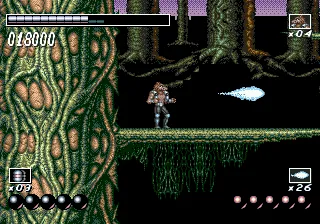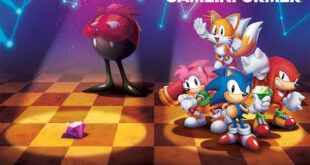Retro Review: “Wolfchild” on the Sega CD – A Howling Adventure in Gaming History
As a dedicated retro gamer, I have a deep appreciation for the classics and the not-so-classic titles that defined the early days of gaming. One such title that often goes overlooked is “Wolfchild,” developed by Core Design and released for the Sega CD in the 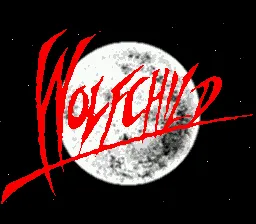 early 1990s. My journey with “Wolfchild” began much later than most; it wasn’t a part of my childhood gaming trove. My mother, bless her soul, had gifted me a Sega CD back in the day, and though she’s no longer with us, the nostalgia and love for that era of gaming are as alive as ever.
early 1990s. My journey with “Wolfchild” began much later than most; it wasn’t a part of my childhood gaming trove. My mother, bless her soul, had gifted me a Sega CD back in the day, and though she’s no longer with us, the nostalgia and love for that era of gaming are as alive as ever.
Developer and Publishing Background
Core Design, a British video game developer, was known for its work on the Sega CD platform. They eventually gained fame for their creation of the “Tomb Raider” series, but before Lara Croft became a household name, there was “Wolfchild.” Released in 1992, the game didn’t quite make the seismic impact Core Design might have hoped for, but it did showcase their talent for crafting engaging gameplay with the technology available at the time.
The Story
The narrative of “Wolfchild” is one of revenge and transformation. Players step into the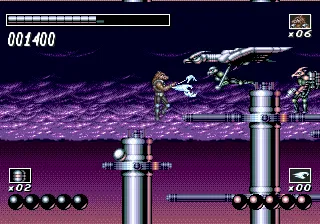 shoes of Saul Morrow, whose father is kidnapped by the evil Chimera Organization. Saul, not one to shy away from a challenge, uses his father’s lycanthropic research to turn into a wolf-human hybrid, a wolfchild, if you will. This transformation is the game’s unique selling point, offering a twist on the standard platformer fare of the era.
shoes of Saul Morrow, whose father is kidnapped by the evil Chimera Organization. Saul, not one to shy away from a challenge, uses his father’s lycanthropic research to turn into a wolf-human hybrid, a wolfchild, if you will. This transformation is the game’s unique selling point, offering a twist on the standard platformer fare of the era.
Gameplay and Mechanics
The gameplay is a blend of action and platforming with a side of shoot-’em-up. Saul begins each level in his human form, which feels underpowered compared to his wolf form, which he transforms into upon gathering enough power-ups. This mechanic adds a layer of strategy to the game; players must decide when to unleash their inner beast for maximum effect.
The Sega CD version offers slight enhancements over its Genesis counterpart, such as additional levels and improved graphics. The controls are responsive, and Saul’s ability to shoot energy projectiles in his wolf form adds a satisfying punch to combat. However, the game isn’t without its frustrations. Enemy placement can feel unfair at times, and certain platforming sections require pixel-perfect precision.
Graphics and Music
“Wolfchild” on the Sega CD shines in its presentation. The graphics are a cut above the Genesis version, with more detailed sprites and richer environments. The color palette is used to great effect, creating atmospheric levels that range from jungles to high-tech bases.
The music, composed by Martin Iveson, is a highlight. The Sega CD’s ability to utilize CD-quality audio meant that “Wolfchild” featured a soundtrack that was both atmospheric and memorable. The music enhances the game’s mood, with a mix of high-energy tracks to accompany the action and moody pieces for the more somber moments.
Reception and Legacy
Upon release, “Wolfchild” received mixed reviews. Some praised the game’s graphics and sound, while others critiqued its difficulty spikes and repetitive gameplay. It’s a title that hasn’t stayed in the limelight like other Sega CD games, but it has its fans. For instance, a member of the “Retro Replay” community, Alex Patterson, reflected on the game:
“Wolfchild doesn’t get the respect it deserves. It’s a hidden gem in the Sega CD library, with music and graphics that really showed what the system could do. It’s not perfect, but it’s got charm.”
Replay Value and Final Thoughts
The game’s challenge and the thrill of the transformation mechanic lend it some replay value. However, once the novelty wears off, “Wolfchild” can feel repetitive. The lack of save points or passwords means that each playthrough is a commitment, which might deter some players from returning.
For me, having recently played through “Wolfchild,” I found it to be a decidedly average experience. It doesn’t reach the soaring heights of the best games of the era, but it’s also far from the worst. It sits comfortably in the middle – an ambitious project that couldn’t quite reach its potential.
Conclusion
“Wolfchild” on the Sega CD represents a time in gaming when developers were still experimenting with the possibilities of new hardware. It’s a game with heart, and while it may not have been a standout hit, it’s a curious piece of gaming history worth checking out for fans of the platform or those interested in Core Design’s early work.
With over 30 years since its release, “Wolfchild” stands as a monument to the era of CD-based gaming – a footnote in the grand narrative of video game history, but a footnote worth reading.
Check out the original soundtrack by Martin Iveson to relive the game’s ambiance. Discover more about Core Design’sdevelopment history on Wikipedia, and delve into discussions and nostalgia on the Retro Replay forums to connect with other fans and see what they’re saying about “Wolfchild” today.
In an industry that constantly looks forward, sometimes it’s the look back that reminds us of the foundations on which modern gaming was built. “Wolfchild” is a testament to that, a game that may not have been the best of its time but still holds a special place in the hearts of those who remember it, like a cherished gift from a loved one now gone.
The verdict.
Graphics - 83%
Sound - 81%
Gameplay - 74%
Replay value - 71%
77%
Wolfchild doesn't get the respect it deserves. It's a hidden gem in the Sega CD library, with music and graphics that really showed what the system could do. It's not perfect, but it's got charm.
 Retro-Replay.com Retro gaming reviews, news, emulation, geek stuff and more!
Retro-Replay.com Retro gaming reviews, news, emulation, geek stuff and more!
